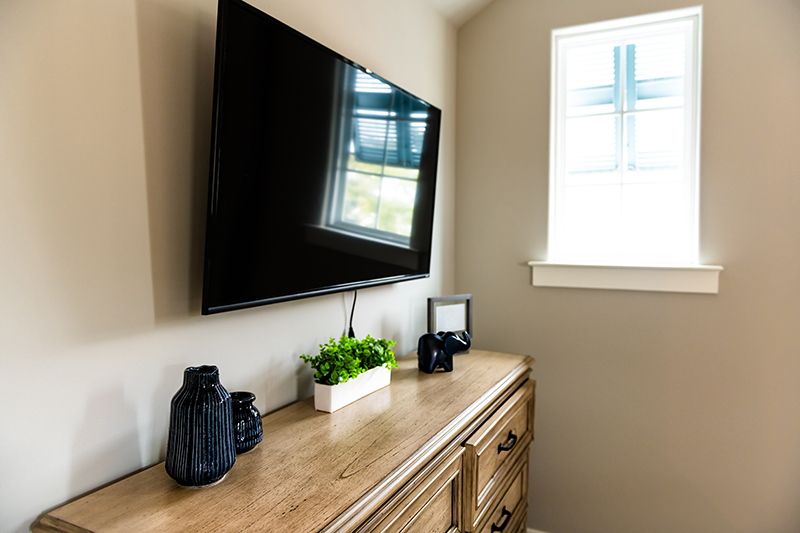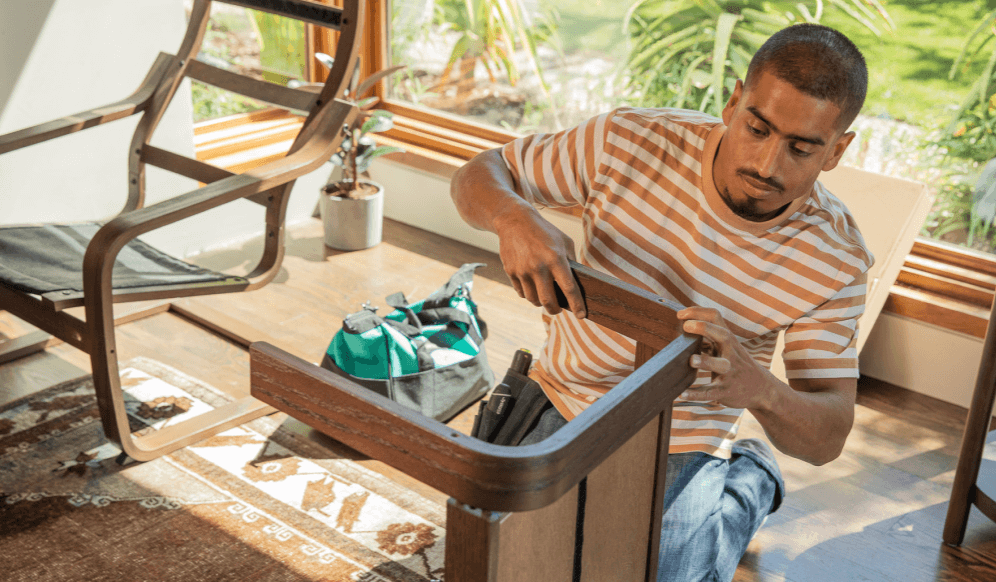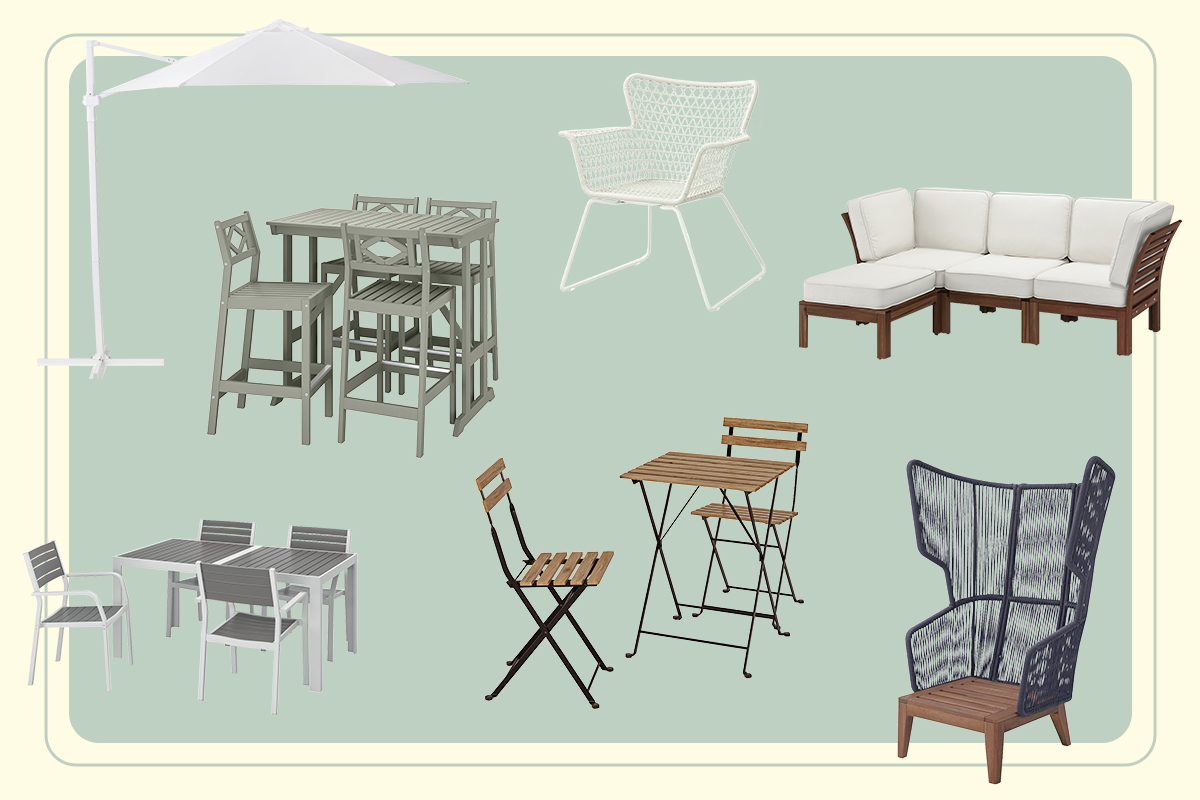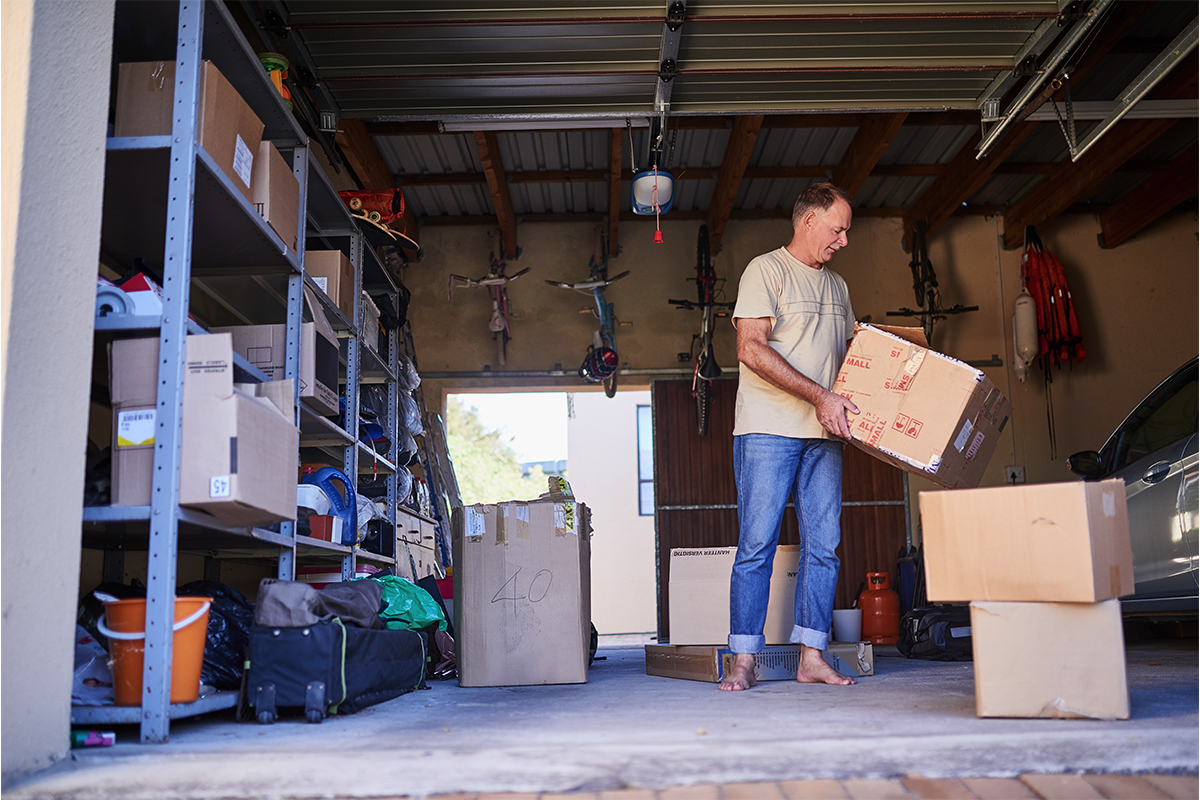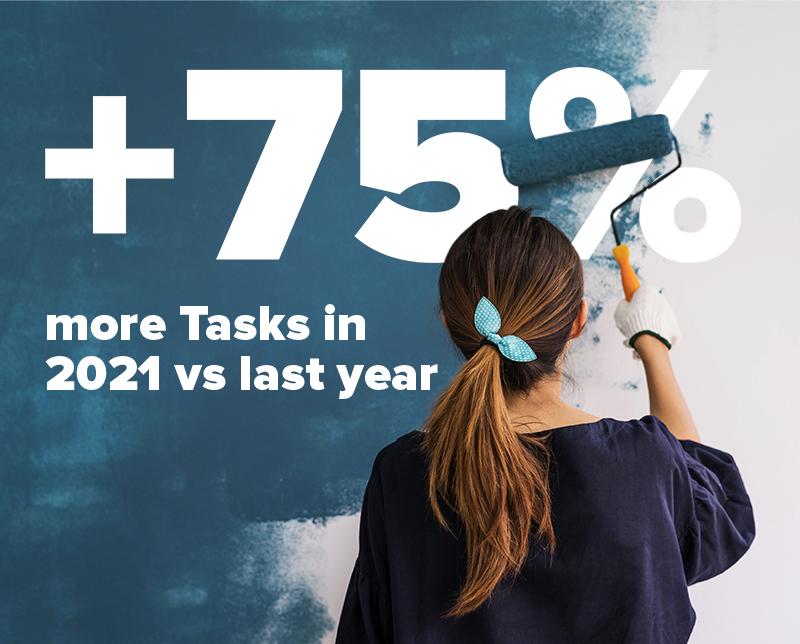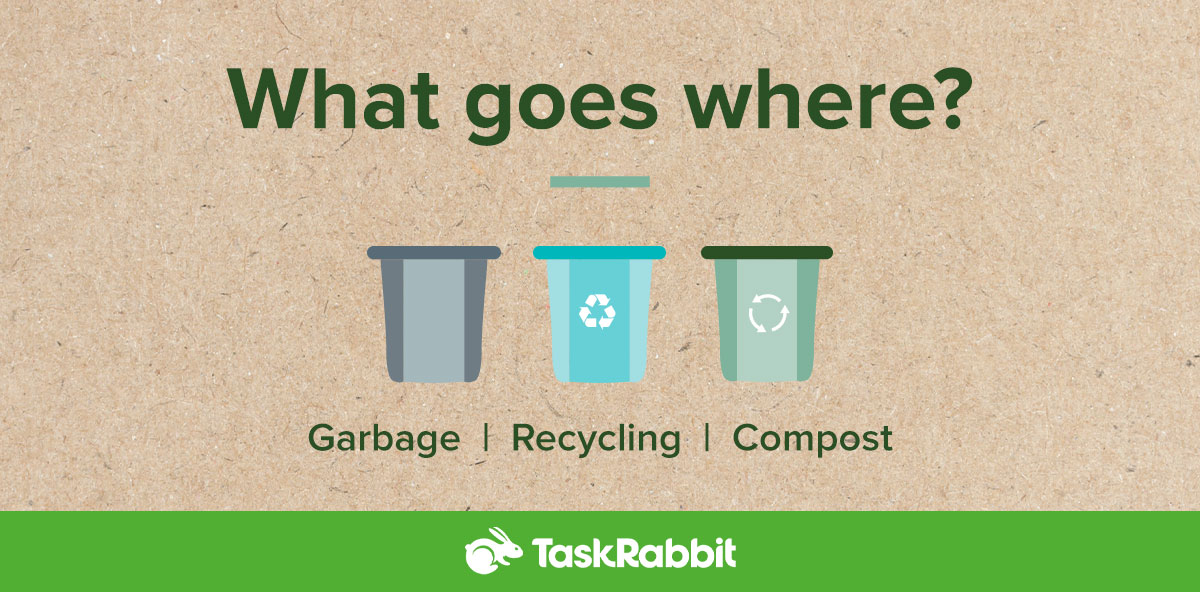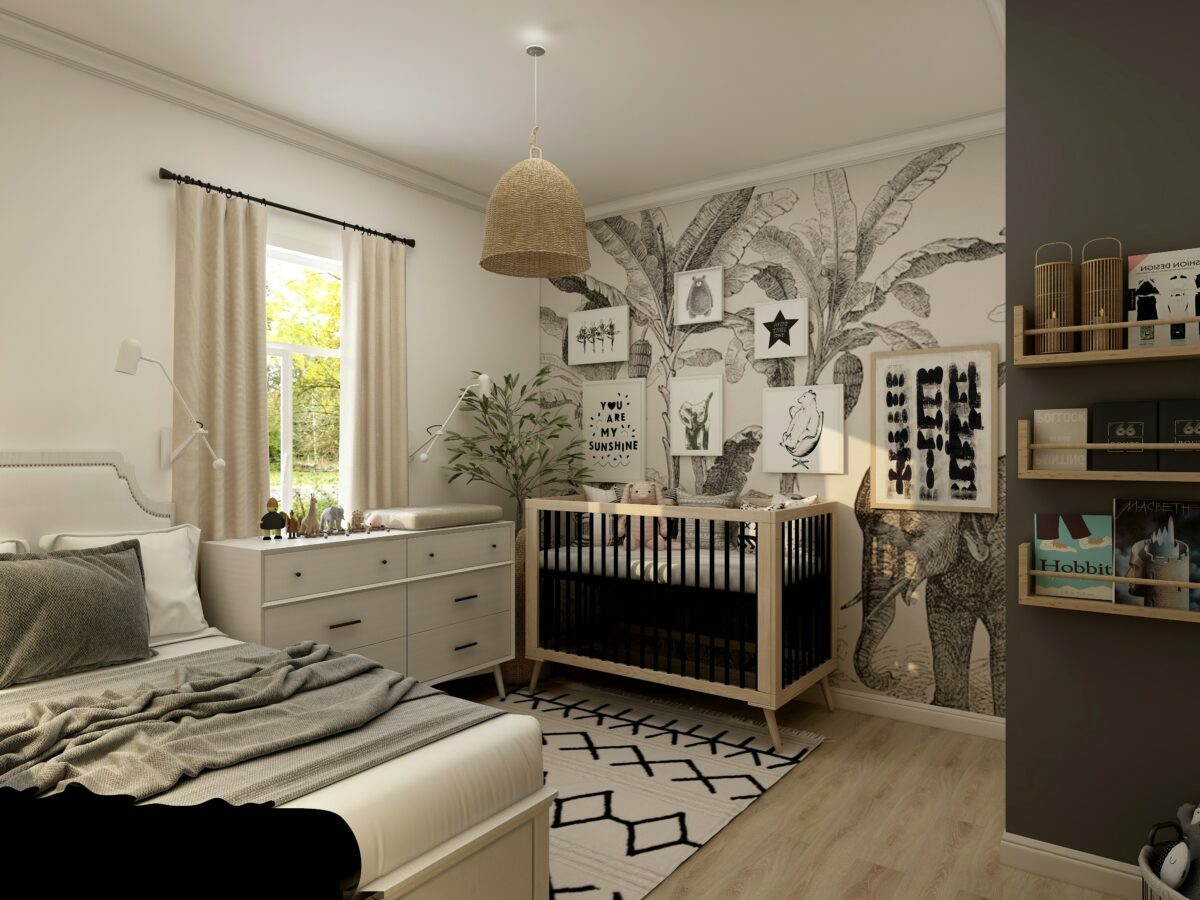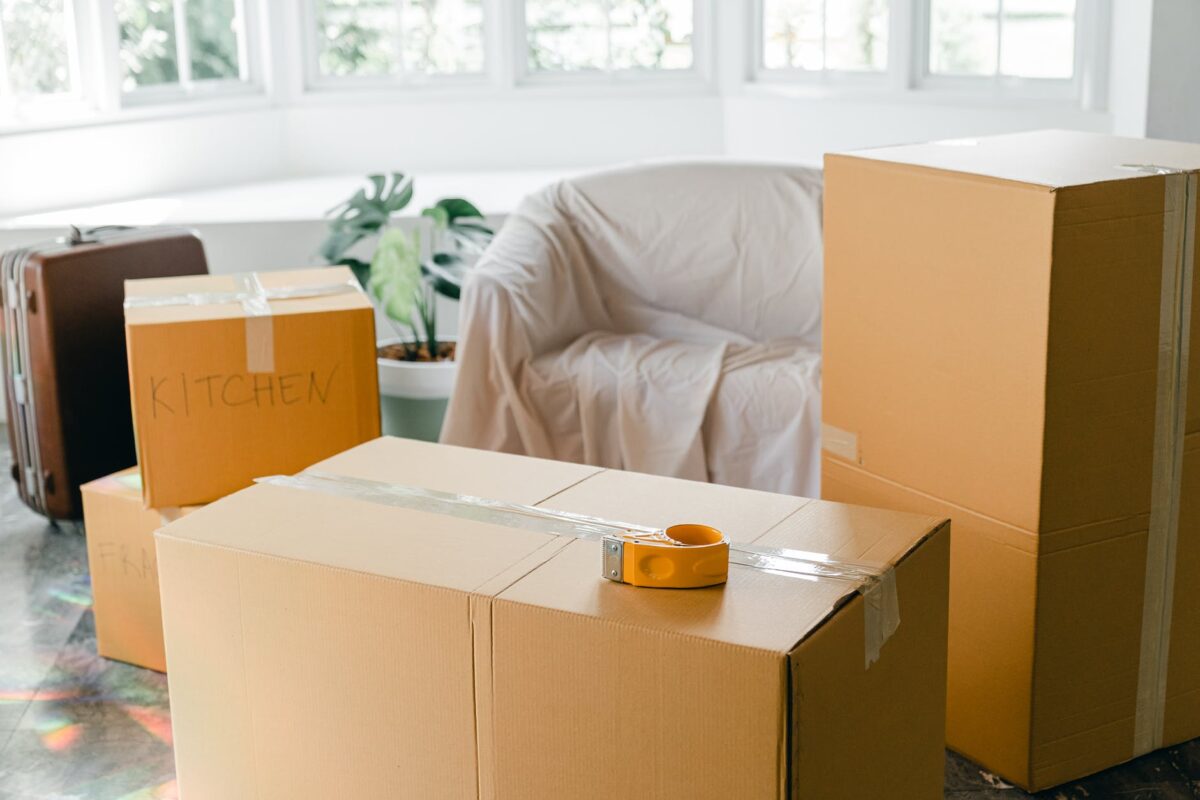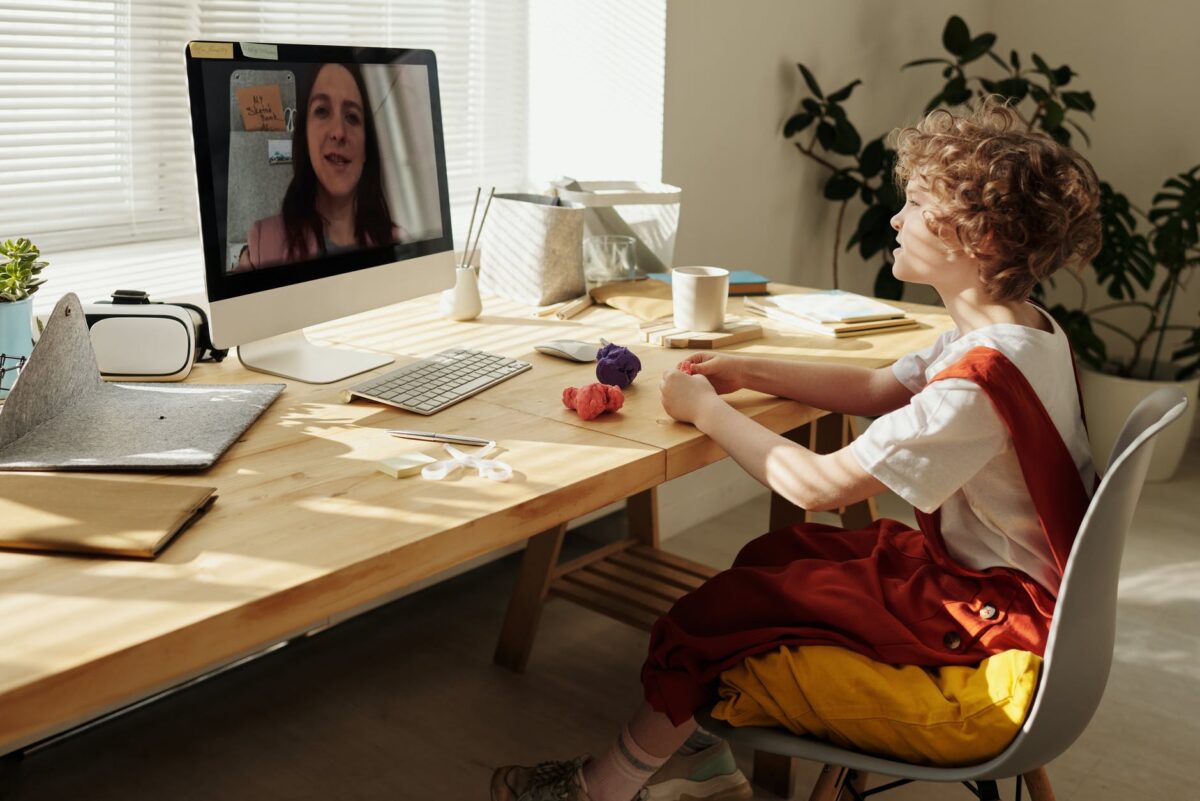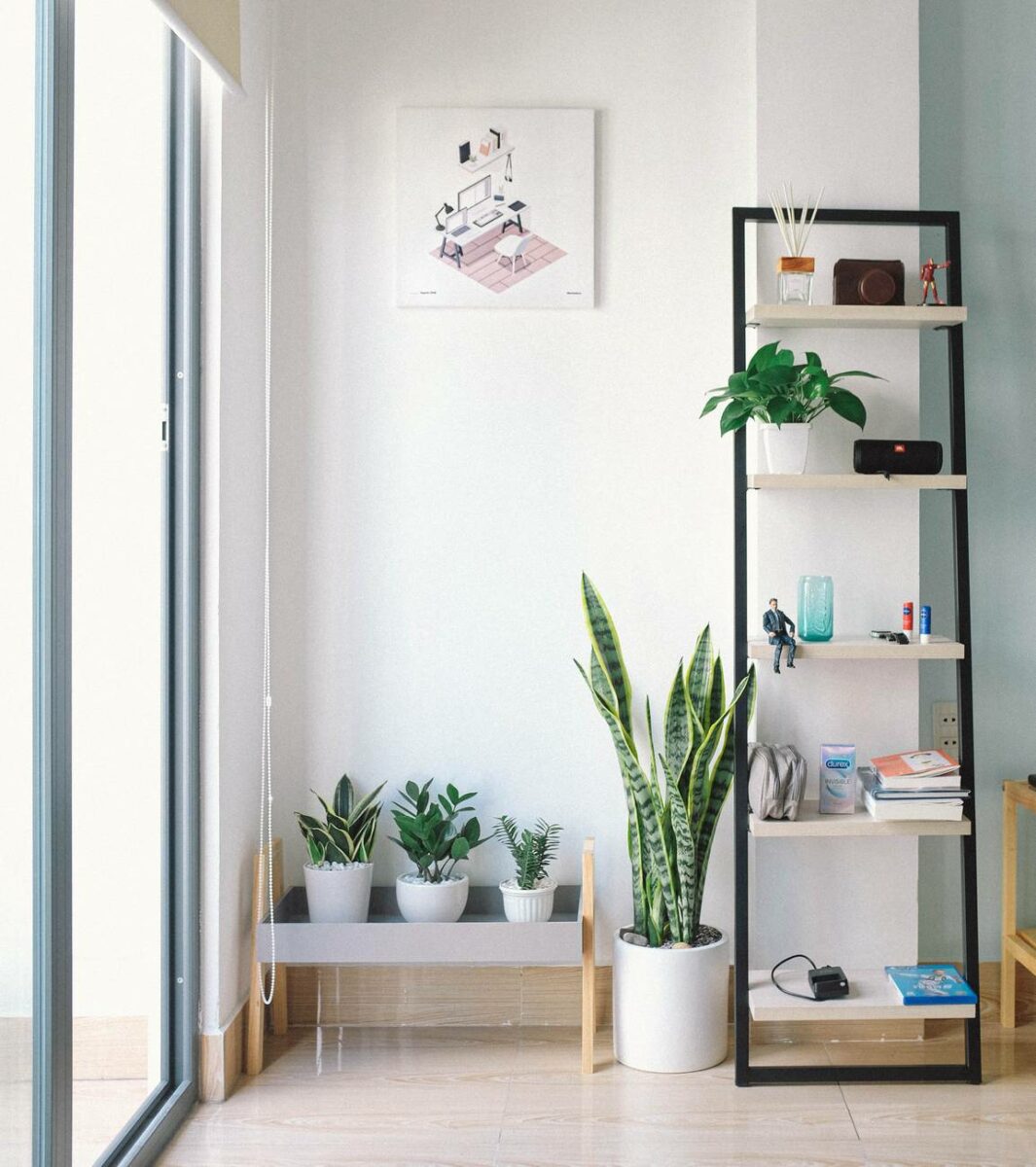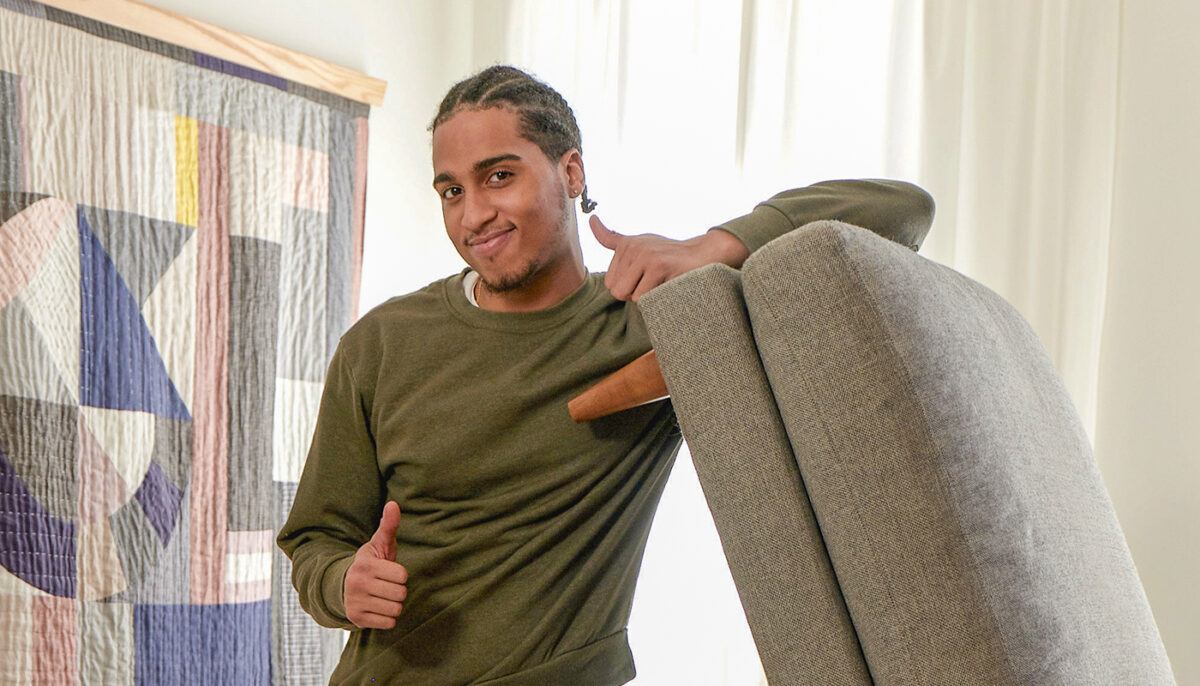Mounting a TV is an easy way to free up space in your home, but it takes some planning to find the best viewing distance whether you have room obstacles or you’re mounting a TV that has a unique size and type of screen. The good news is you can get creative with the location and work with the different furniture heights in each room before you mount to give you an optimal entertainment experience.
Choose the location before you purchase a TV wall mount kit
You’ll want to choose the location to mount your TV before you purchase a wall mount kit since there’s a variety of options available. Most TV wall mount kits come with attachments for the wall, rear of TV, and the necessary screws. that attach to the wall, rear of the TV and include corner screws. If you decide to mount your TV in a corner, you may want a kit with different wall brackets. Remember, you have more freedom with the location of your TV when you mount it to a wall than displaying it on a piece of furniture. So get creative — consider if there are multiple viewing angles in your living room and explore swivel features, or if you need a tilt feature because laying down on the couch and sitting on the edge of your seat are not mutually exclusive activities.
Most importantly, consider where it’s going. If you have drywall, you’ll be able to use any stud finder to locate the studs within the wall, but if you have lathe or plaster walls, you’ll need a magnetic stud finder to search underneath layers of wood and plaster drilled or nailed into the stud.
TV Size and mounting height
Before you get lost in the plethora of viewing distance charts from TV manufacturers, you should know that the best distance to watch TV is the distance that feels most comfortable for you without any physical discomfort.
Today’s flat-panel screen TVs don’t emit radiation, so you can sit close to the TV.
If you’re trying to understand the best TV viewing height, consider the function of the room: Experts recommend sitting at eye level to prevent your eye muscles and neck from straining. If you’ll be watching TV mostly lying down, mounting the TV slightly higher than high level can assist with comfort.

Consider Viewing Distance
When you determine the best TV viewing distance for you, make sure you factor the type of TV as well as its measurements. The most common TVs on the market right now are high definition models where the recommended distance for watching is three times the unit’s vertical screen size. For more standard definition models, the distance should be six times the TV’s vertical screen size. For anyone mounting 4k models, it’s the viewer’s choice: Since the human eye can’t really tell individual pixels apart, the pixels disappear when watching, giving a real-life impression that doesn’t get distorted if we sit close to the screen.
You’d be correct to assume that size matters as well. Make sure you measure the width of the TV and its screen height to give you the ideal mounting height. If you’re mounting a larger screen, you’ll want the bottom of the TV to be closer to the floor than a smaller screen.
The chart below shows you how high to mount a 50 inch TV on a wall. As the TV measurements go up and down, so does the mounting and screen height. For example, if you have a large 85 inch screen, you’ll want the bottom of the TV to be closer to the floor than if you have a small 32 inch screen. Be sure to check out this table before you mark the exact location based on your TV’s measurements.
The type of TV you’re mounting on the wall also impacts the exact location of the studs. You’ll be able to rely on a variety of stud finders to help you through a somewhat tedious process, but new mounters – beware, finding studs can be a much longer process than the product you buy to locate the studs may advertise.
Mounting a TV in Different Rooms
The best part about mounting your own TV, is you can make sure it’s positioned to best suit your viewing needs. As with anything, a different space may require a different approach, but if you have an open wall, you have a very realistic dream of mounting your TV. Here’s some tricks & inspiration to help you whether you’re mounting a TV for family movie night or looking to find the perfect corner of your bedroom.
Find the best viewing distance in your family room
In open areas of your home, you may have to navigate your TV location around furniture or other appliances. You’ll want to find the best living room TV height for you and your household where you can all watch comfortably at eye level. For an example of measuring the viewing distance, a 50in TV screen would need to be about 6 ft from where you’re seated. Depending on your setup and needs, you can adjust the measurements accordingly by testing out your available setting area.
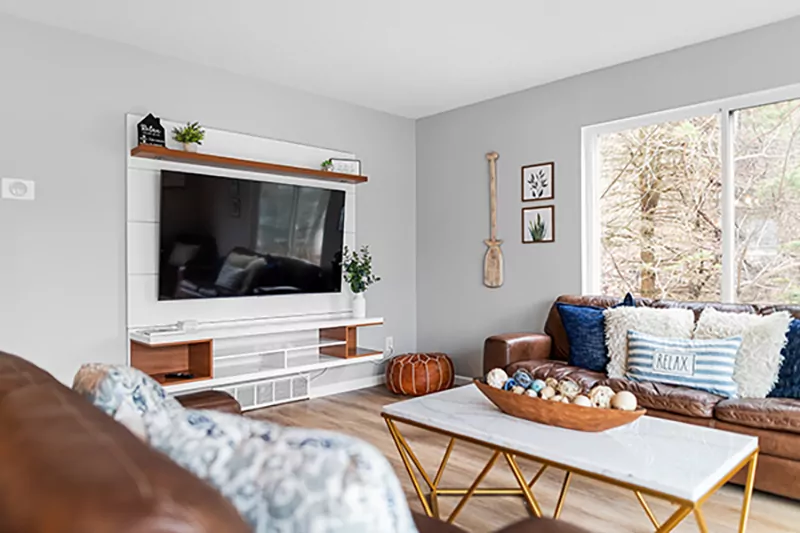
Act out your future viewing experiences to make sure your location is right for you. Take a seat where you want to watch TV, look straight ahead, and measure your eye level. You can repeat this with members of your household to get the average eye level from your floor, couch or chairs.
How to decide the best bedroom TV height
We know the ideal environment to watch TV is around 32 inches or at eye level, but if you’ll be lying down mostly, you can create similar conditions by mounting the TV about 25 inches from the floor, which is slightly higher than eye level. And since not all bedrooms are created equal, consider the room size and TV size as you choose the precise location. An ideal screen size for smaller to medium rooms is 43 inches, and hot tip — larger TVs will have higher resolutions, and higher resolutions give you opportunities to close your distance if your bedroom is smaller.

Mounting a TV above a fireplace
If you’re like many renters or homeowners, you may find yourself with limited wall space to mount your TV which really just means you get to be super creative about your strategy. You can mount your TV in the corner of an open-style kitchen or find a really great reason why it should be in your home office. The only no-watch zone in most homes will be the fireplace. Since electronic components of a TV are highly sensitive, they can get destroyed when exposed to extreme heat coming from a fireplace. Plus, you definitely don’t want smoke and soot getting into the television.
When the only choice is the fireplace, you’ll need to get a TV mounting kit with tilting brackets to adjust the screen until it’s even or feels right from the viewing locations in the room.
Once you’ve chosen your TV’s destination, follow these instructions to mount your TV to any wall in your home.

7 Steps for mounting a TV on your wall
Do a quick survey before you mount your TV to a wall by yourself. You may need a second set of hands to hold the mounting bracket in place while you mark pilot holes or when screwing the mounting plate into the wall.
Step 1: Find the studs with the stud finder
Use any stud finder to locate the studs you’ll need to latch the TV onto within the drywall. Use a magnetic eraser to find studs in lathe and plaster.
Step 2: Mark the hole positions with the pencil
Once you’ve found the right location, height, and/or angle for the mounting bracket, mark the hole positions with your pencil
Step 3: Double check the position against the brackets in the kit
Take a moment to make sure the drilled spots won’t get interrupted by any underlying nails or screws
Step 4: Drill pilot holes at the pencil marks
Be sure you read the instructions on any unfamiliar power drills first and then drill the pilot holes carefully into the pencil marks.
Step 5: Mount the wall bracket
Reposition the bracket over the drilled holes, and attach it to the wall with the screws provided in the mount kit.
You’ll want to test the weight it can hold by pulling lightly on the bracket with your hands to make sure it doesn’t move.
Step 6: Attach the TV to the mounting plate
You should have a mounting plate that came with your bracket to secure the attachment. If you have four hands, you can attach the plate directly to the wall and line it up with the pilot holes.
If you’re by yourself, you can attach the mounting plate to the TV by placing your TV on a flat, soft surface to protect the screen from damage. Follow the TV’s instructions for attaching mounting plates.
Step 7: Mount the TV to the wall
With the TV still attached, lift the mounting plate and line it up with the drilled pilot holes. Screw each fixing bolt into the plate with a screwdriver or ratchet. Start loosely until you screw in each one and then tighten each screw until the plate is solid. Most TVs will clip right into the mounting brackets on the wall, but the manual will guide you on how it will attach.
Final Thoughts
Now your TV is hopefully firmly mounted to your heart, and eye’s desire. You’ve taken one-step towards home improvement and another step towards favorite-member-of-household. Take a moment to connect your TV, adjust any cords, clean up any mess, congratulate yourself for an easy job done like a pro, and press: power.
